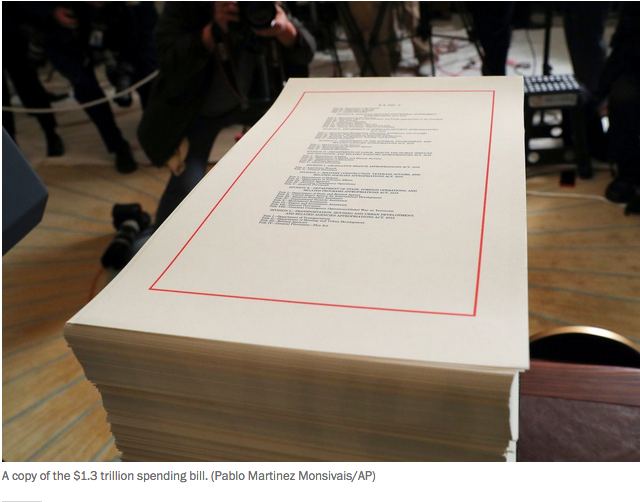From Scotland, where Adam Smith pioneered systematic thinking about economics, comes an adjective, “carnaptious,” that fits people who are allergic to economic euphoria. It means cantankerous. Let’s think carnaptiously about this fact: The interest rate on 10-year Treasury bonds recently rose briefly to 3 percent, and soon may move above this. This is more than evidence of the economy’s strength. It also is a harbinger of a coming day when the great driver of the national debt will be . . . the national debt. Pour a Scotch and read on.
The economy’s growth, which slowed in 2018’s first quarter, is not brisk; it still is not even the 3 percent that is the low end of presidential boasting. At the end of this month, the economy will amble into the 10th year of the expansion that began in June 2009. This month is its 108th, making it almost twice as long as the average expansion (58 months) since 1945. Unless Mr. I Alone Can Fix It has banished the business cycle forever — modesty would not have prevented him from mentioning this — a contraction is somewhere in America’s future. It might begin in fiscal conditions resembling today’s because this is now normal: trillion-dollar annual budget deficits while the economy is at full employment. (The 3.9 percent unemployment rate is impressive, even given the decades-long decline in the workforce participation rate.)
This is a result achieved when both ends of Pennsylvania Avenue are controlled by what still fancies itself a conservative party. What are the chances of fiscal improvements arriving after the electorate returns many congressional Republicans to the private sector of which they speak so fondly?
The Manhattan Institute’s Nicole Gelinas notes that “from the 1960s through the beginning of the financial crisis, Treasury rates never fell below 3 percent, and they were often several percentage points above that.” In 2007, the Great Recession arrived in December when the national debt was $7.5 trillion and the average interest on it was 4.5 percent. Imagine paying 4.5 percent on today’s $16.5 trillion debt.
The Congressional Budget Office projects that new federal borrowing over the next 10 years will total $12.4 trillion and that at the end of 2028, the debt will be $28.7 trillion — 96 percent of gross domestic product, up from 39 percent in 2008. But the CBO is required to pretend that Congress will not make matters worse. Its projections must assume the continuation of current law. So, the CBO must assume that the caps on defense and nondefense appropriations imposed in the Budget Control Act of 2011 will be enforced in 2020 and 2021. But those for 2018 and 2019 have just been discarded. How likely is a reversion to disagreeable discipline?




